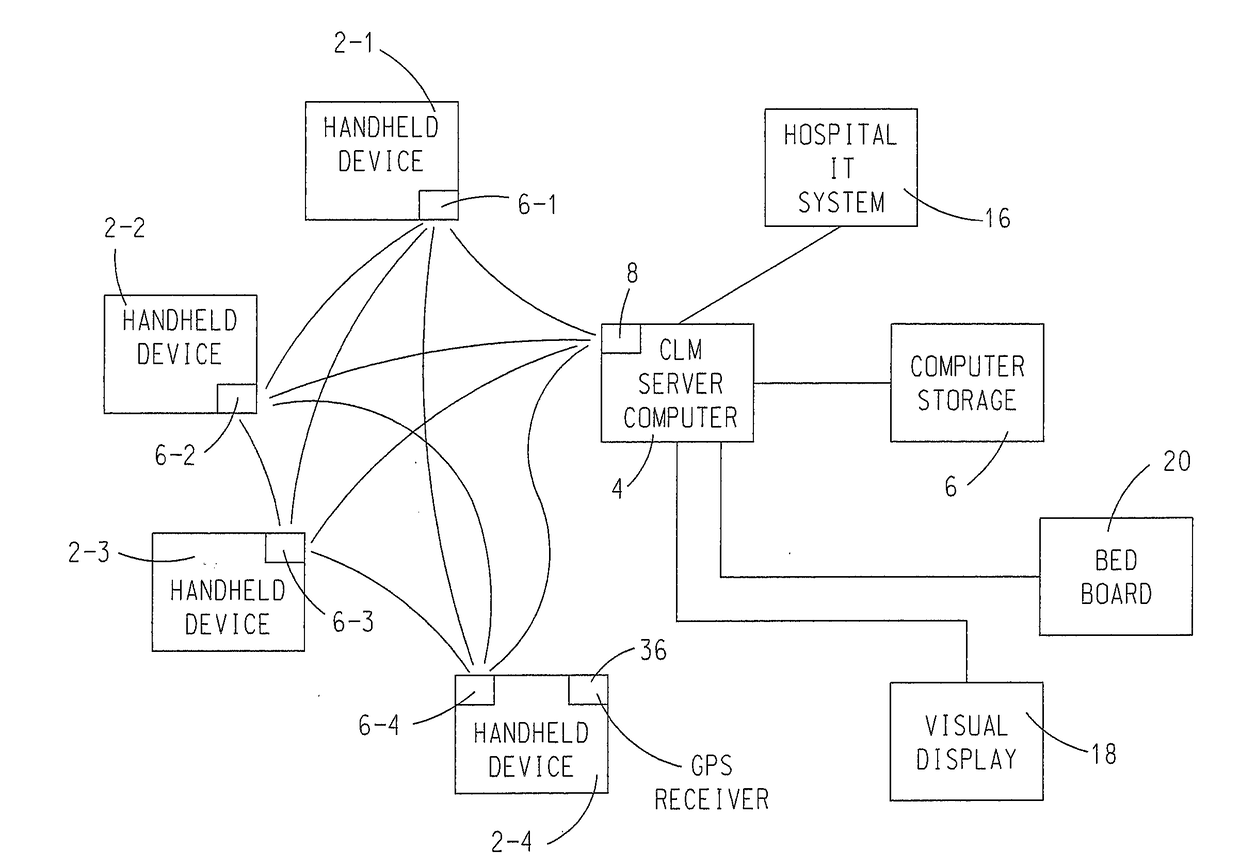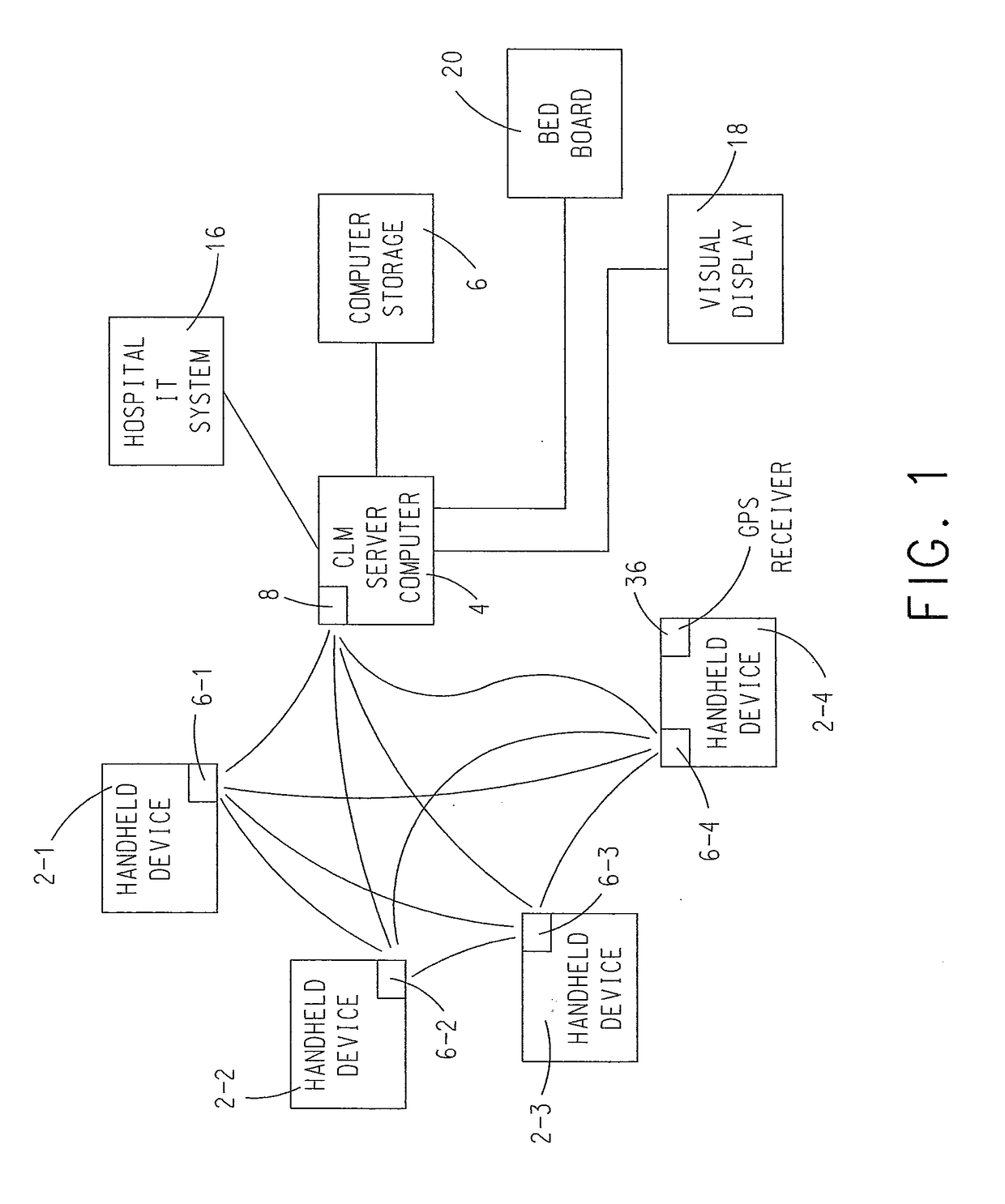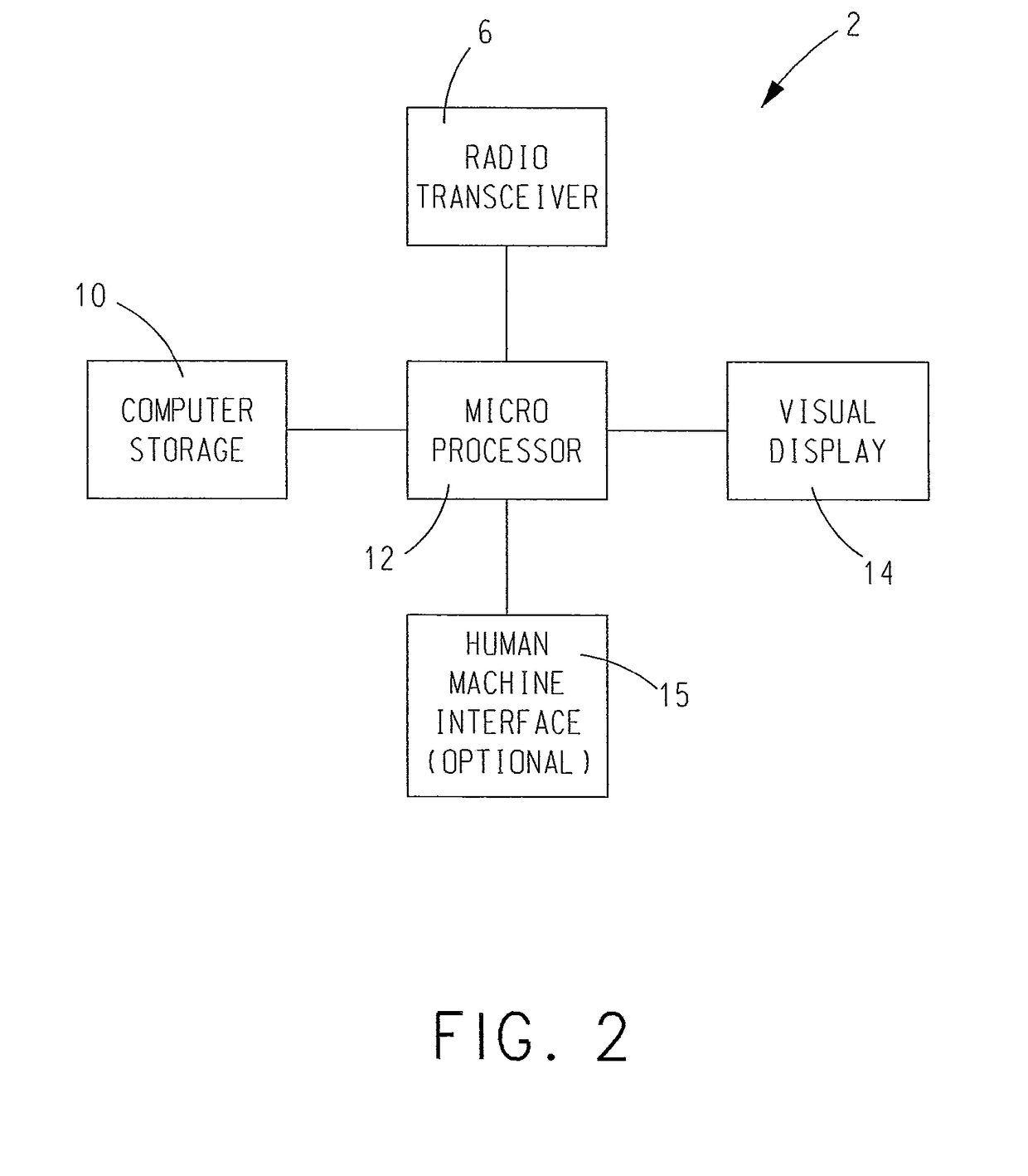System and Method of Patient Flow and Treatment Management
a patient flow and treatment management technology, applied in the field of real-time admission prediction and task execution, can solve the problems of inefficient mix inefficient use of these resources within a hospital, and inefficient use of paper charts and electronic medical records, so as to improve the efficiency of the admission process and reduce the time it takes
- Summary
- Abstract
- Description
- Claims
- Application Information
AI Technical Summary
Benefits of technology
Problems solved by technology
Method used
Image
Examples
Embodiment Construction
)
[0047]The present invention will now be described with reference to the accompany figures where like reference numbers correspond to like elements.
[0048]With reference to FIG. 1, an exemplary, non-limiting, system in accordance with the present invention includes a plurality of handheld or mobile devices 2 in communication with a Care Logistics Management (CLM) server computer 4 that has access to a computer storage 6. Each handheld device 2 includes a wireless transceiver 6, and CLM server 4 includes or is coupled in operative relation to a wireless transceiver 8. Each transceiver 6 is operative for establishing two-way communication with each other transceiver 6 and with transceiver 8. Similarly, transceiver 8 is operative for establishing two-way communication with each transceiver 6. The physical location of CLM server 4 and transceiver 8 is not to be construed as limiting the invention since it is envisioned that CLM server 4 and transceiver 8 can be located at or remotely fro...
PUM
 Login to View More
Login to View More Abstract
Description
Claims
Application Information
 Login to View More
Login to View More - R&D
- Intellectual Property
- Life Sciences
- Materials
- Tech Scout
- Unparalleled Data Quality
- Higher Quality Content
- 60% Fewer Hallucinations
Browse by: Latest US Patents, China's latest patents, Technical Efficacy Thesaurus, Application Domain, Technology Topic, Popular Technical Reports.
© 2025 PatSnap. All rights reserved.Legal|Privacy policy|Modern Slavery Act Transparency Statement|Sitemap|About US| Contact US: help@patsnap.com



